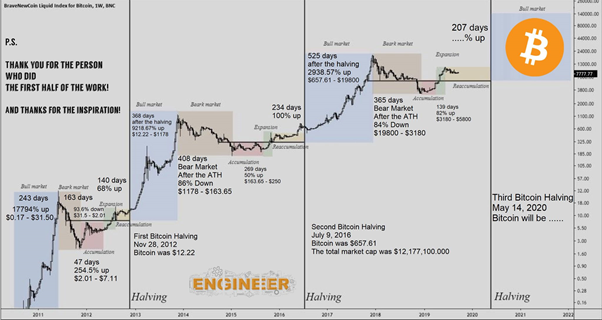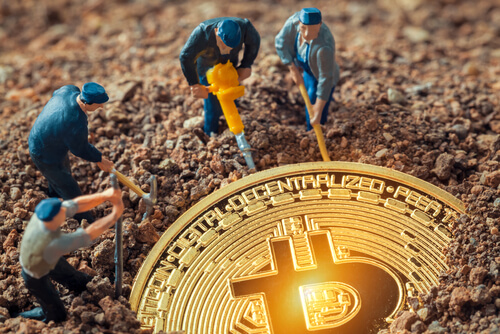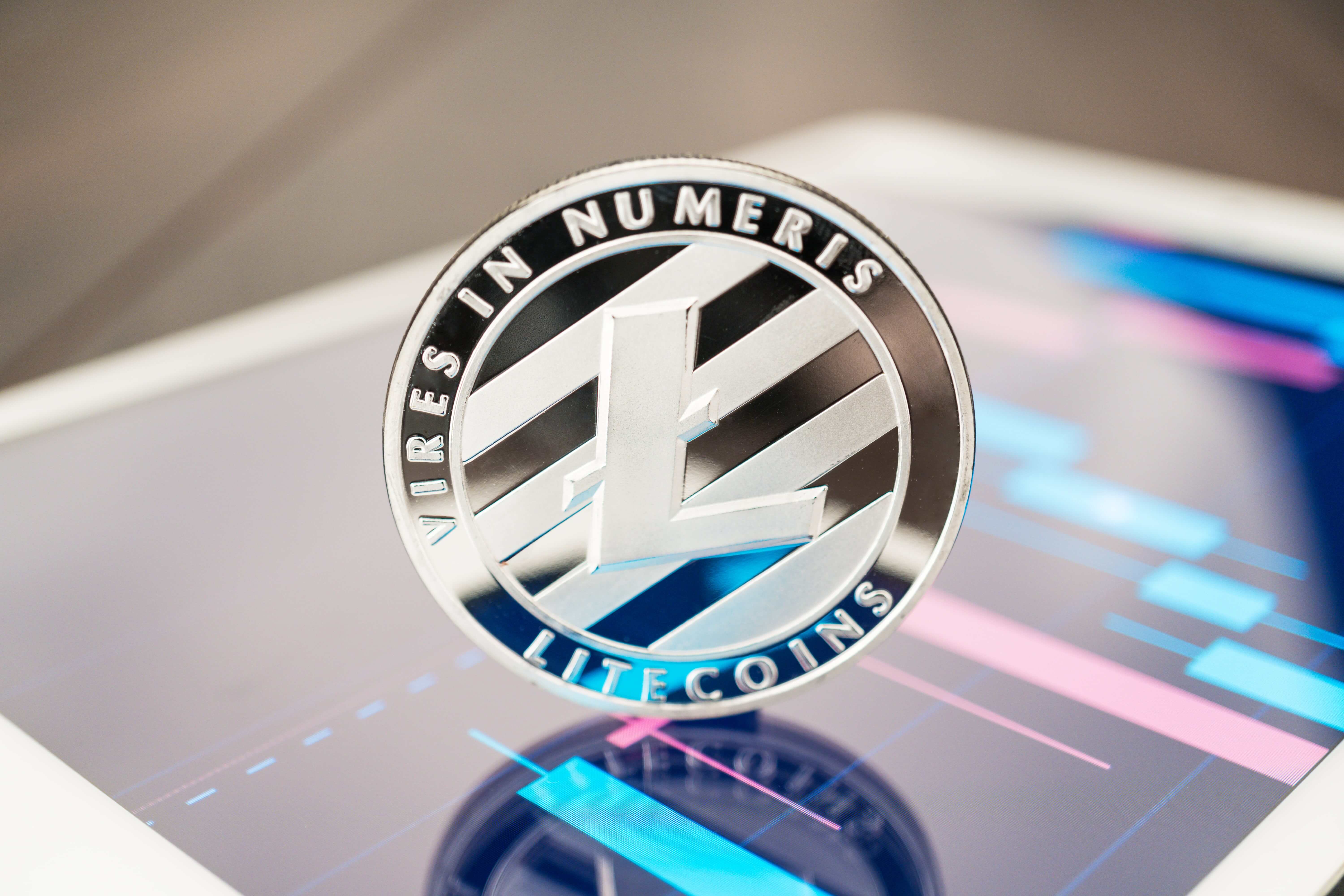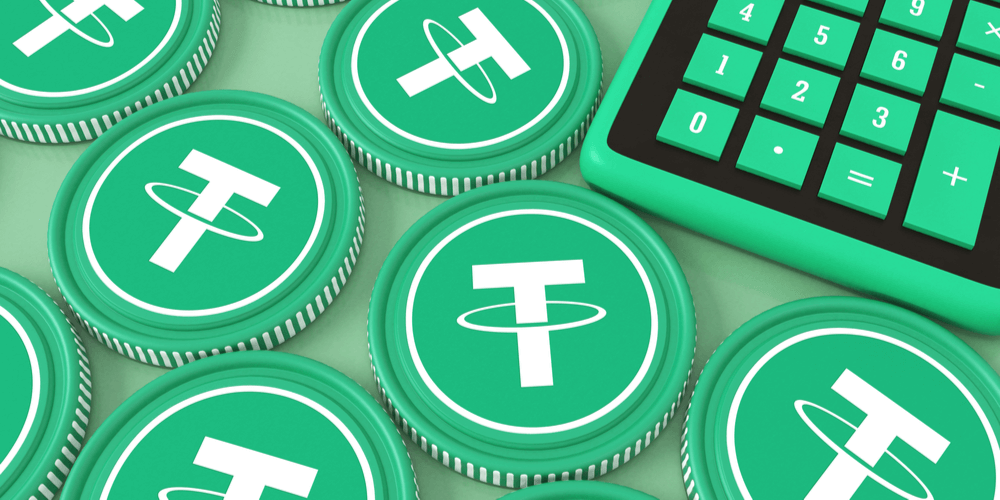Every few years an event takes hold of the Bitcoin market known as a Bitcoin halving – what is it and how does it affect the Bitcoin price?
As any investor begins to dig deeper into cryptocurrencies, questions about some of the more technical aspects of Bitcoin naturally follow. For example, what exactly is bitcoin ‘halving’? Why does it matter? What do I need to know about Bitcoin halving?
Reminder: How are Bitcoins created?
To understand a Bitcoin halving, we first need to be clear about how new Bitcoins come into existence.
New Bitcoins are created through a decentralised system in which individuals known as ‘miners’ use their computers to solve cryptographic problems. These problems, which the decentralised network of computers solves allow for the verification of transactions recorded on the decentralised ledger known as a ‘blockchain’. In this way, everyone everywhere is simultaneously contributing to maintaining the integrity of the ledger, and this effectively means the ledger can’t be falsified or hacked.
In return for allocating their processing power to this task, miners are rewarded with newly created Bitcoins. New Bitcoins are distributed in proportion to how much processing power each individual puts toward the collective task of solving the puzzles. As such, the more processing power you contribute, the higher the chance you will be rewarded with more of the newly created Bitcoins. This makes Bitcoin mining a competitive activity, and today vast Bitcoin ‘mines’ operate around the world in the form of warehouses full of turbo-charged processors running 24 hours a day.
What is Bitcoin halving?
A simple starting assumption of microeconomics is that a key determinant of value is scarcity. For example, a rare painting possesses value partly because it is one of a kind, unique and never to be replicated. Meanwhile, a grain of rice has much less value, again partly because there are so many similar grains in existence. Satoshi Nakamoto, the creator of Bitcoin was acutely aware of this phenomenon, and specifically designed Bitcoin to hold its value over time.
‘Halving’ refers to an event that happens at pre-determined points in time when the pace at which new Bitcoins are created is cut in half.
Relating this back to Bitcoin mining – it means that after a halving event – miners will get half the number of Bitcoins they once got for the same amount of work.
In this way, there is a fixed amount of Bitcoin that can ever be created. That number is 21 million, and this will never change.
Since the maximum supply of Bitcoin is fixed, there is a huge difference between Bitcoin and other forms of money. US dollars, for example, have no fixed maximum amount, and in fact, since 2008 the Federal Reserve has created many billions of new dollars and every time a bank makes a loan or the government hands out a ‘stimmy check’ these dollars are released into circulation. Crucially, this means the value of each dollar tends to fall over time.
How does a halving affect the Bitcoin price?
Investors tend to watch the price of Bitcoin closely around halving dates. The following chart shows a notable relationship between halving dates and gains in the price of Bitcoin afterwards.

Source: masterthecrypto.com
When does halving happen?
For every 210,000 blocks added to the blockchain, the reward is cut in half. It takes about 4 years for this to be accomplished, so given that the last halving was in May, 2020, the next halving will likely be in 2024. Once 21 million Bitcoins have been mined, no more will be produced and the system will function with this fixed amount in circulation.
Whilst the timing is largely arbitrary, the regular process of halving meant that many more Bitcoins were produced when the system was first launched. This gave people an incentive to join the network, as early mining activity resulted in a relatively large haul of new coins.
Why does halving happen?
Inflation is a general and sustained rise on prices across an economy. When prices are rising, what is called the purchasing power of currency declines. This is because each dollar, for example, will now be worth less than was the case before prices rose. This mean inflation steadily lowers the value of money, and so one dollar today can buy you much less than one dollar one year, or ten years, or fifty years ago could.
As such, the halving is a unique feature of Bitcoin as a form of money and allows it to fight against the tendency for inflation to lower the value of money over time. In fact, exactly the opposite should occur – one Bitcoin in the future can be expected to buy more than one Bitcoin can today.
The point is that each halving reduces the reward for mining, and this means that creating new Bitcoins becomes more and more expensive. The cost of running the machines that mine Bitcoin is very substantial, and the halving means that each new coin mined should be more valuable than the last due to being relatively scarcer.
What will happen when no new Bitcoins can be mined anymore?
The final halving is scheduled to occur in the year 2140. After this, no new coins will enter circulation, and there is an open question about what the incentive will be for former miners to keep their machines connected to the network. One proposal is that by this time Bitcoin may well have become a much more widely accepted currency, and so miners will be rewarded through fees from network users. However, this date is so far off, and it is impossible to predict with any certainty what the financial, economic, and technological conditions of the world will be in 2140 that such questions are purely speculative.
Key points on Bitcoin halving
Bitcoin halving is an essential event which happens roughly every four years. The first halving happened in 2012, and it’s a key part of what makes Bitcoin a so-called ‘inflation-proof’ currency. Halving is programmed into Bitcoin with the intention of keeping the total supply fixed. This in turn means that the purchasing power of Bitcoin should rise over time, unlike that of the US dollar.
Bitcoin holders and also Bitcoin traders are likely to watch for halving dates because interest in the currency tends to spike around these times, and exchange rates accordingly tend to be a bit more volatile close to or just after halvings.










